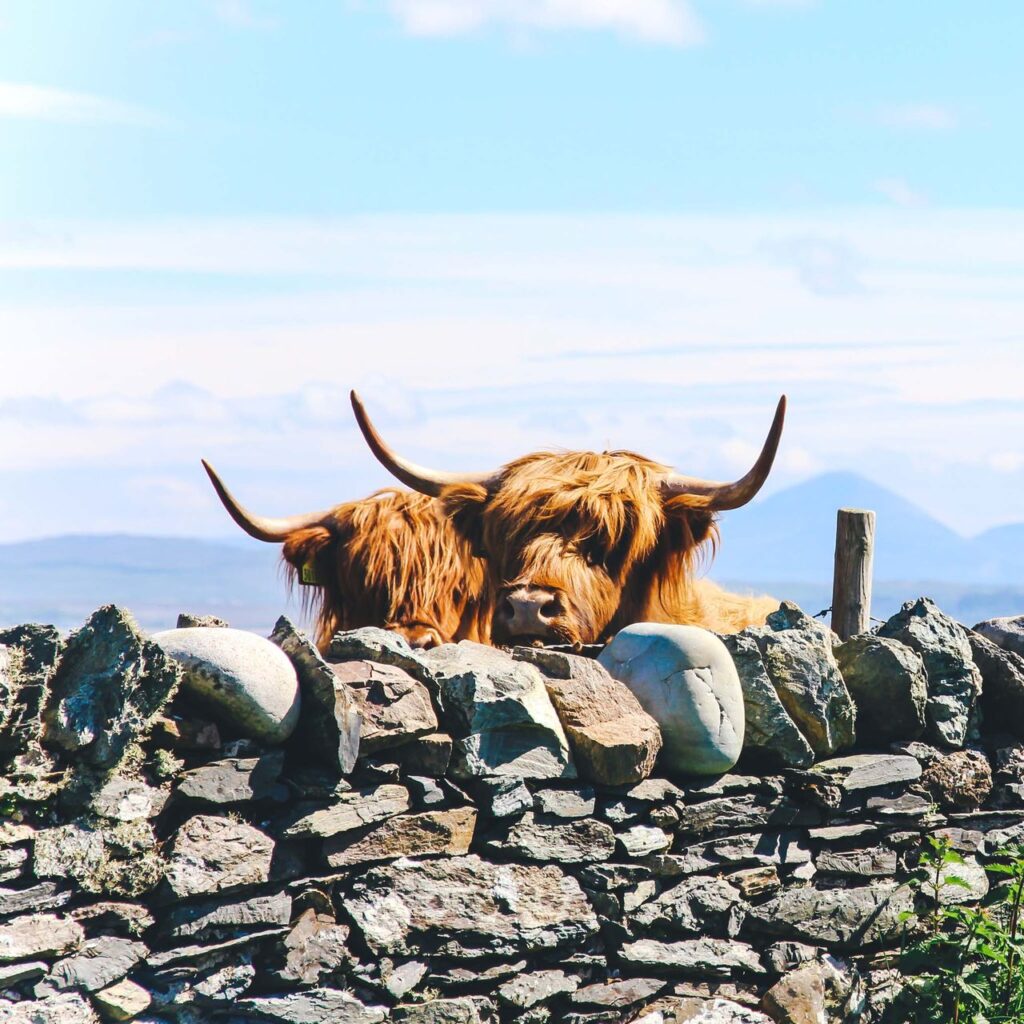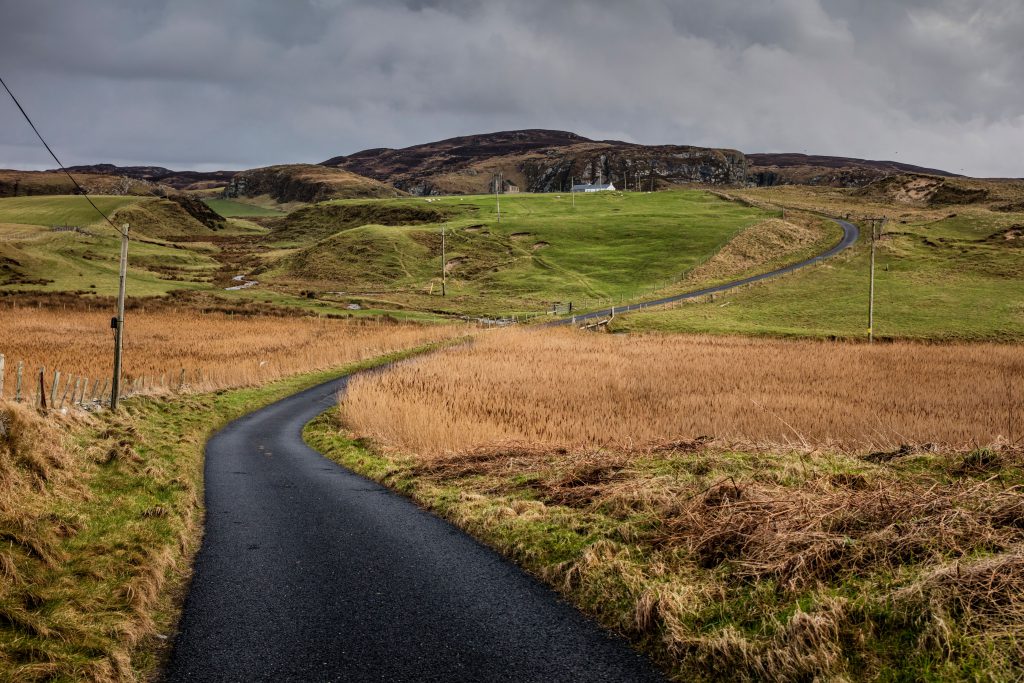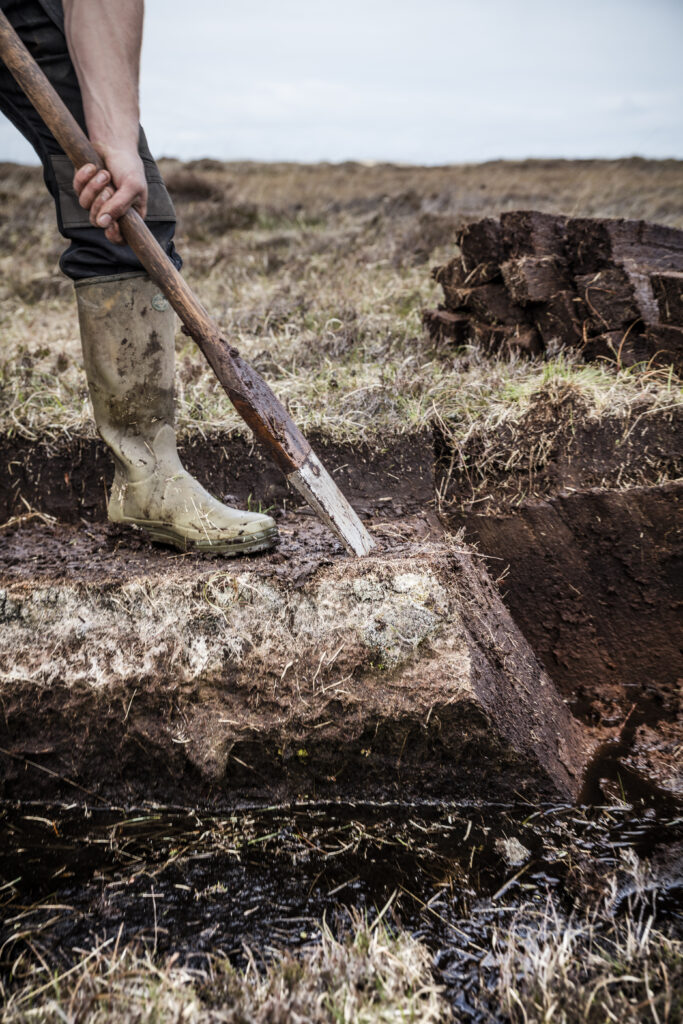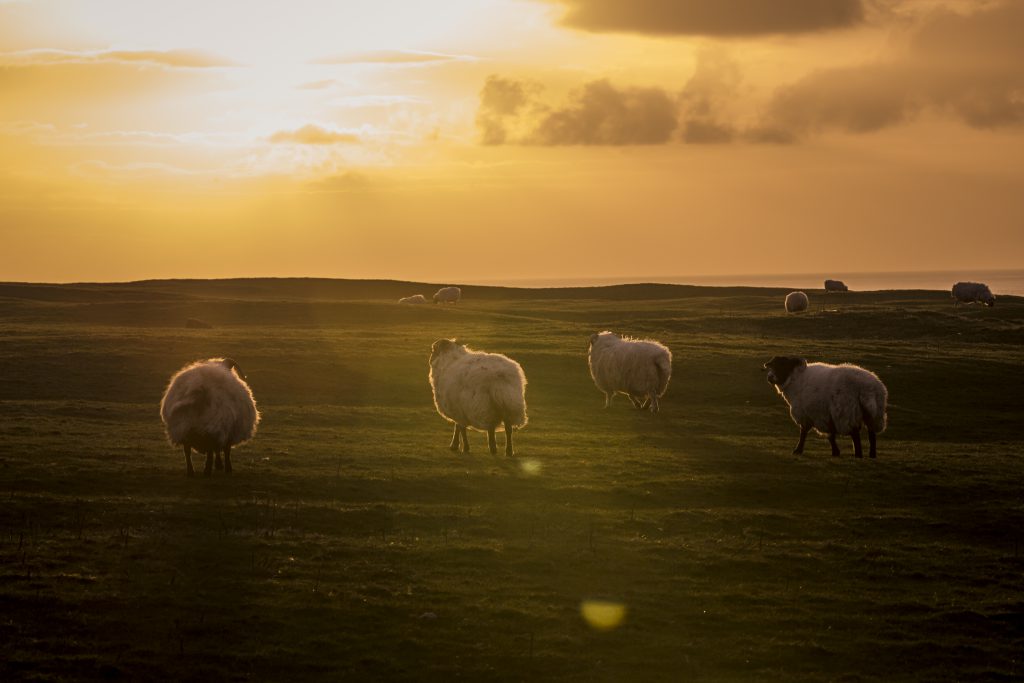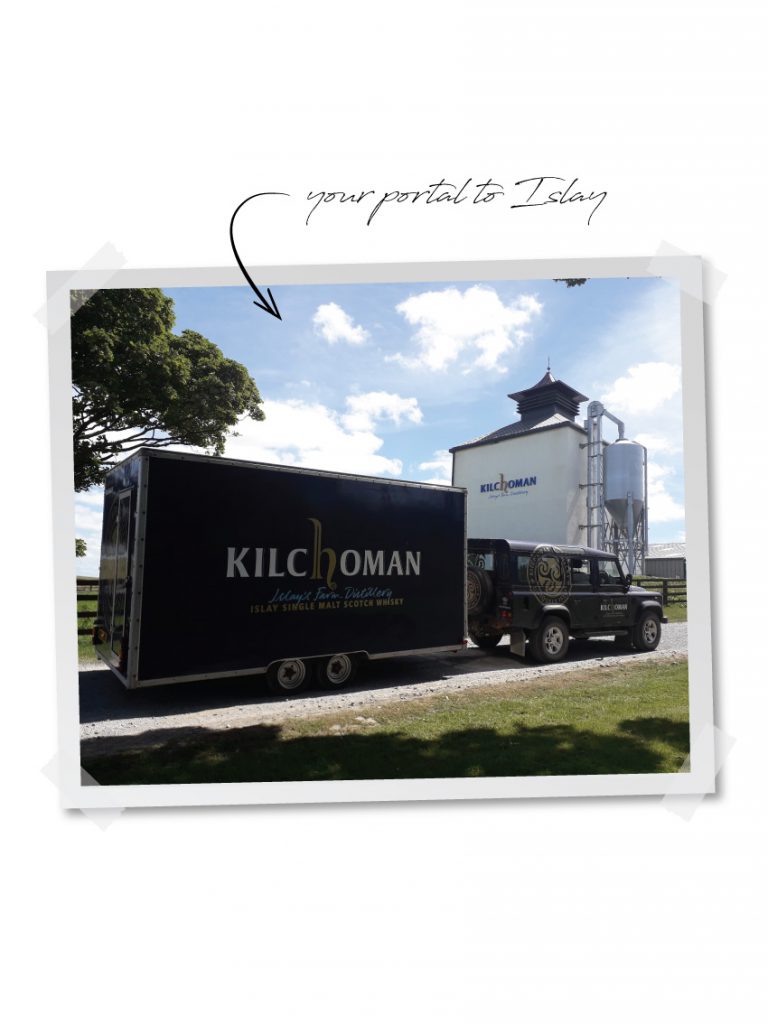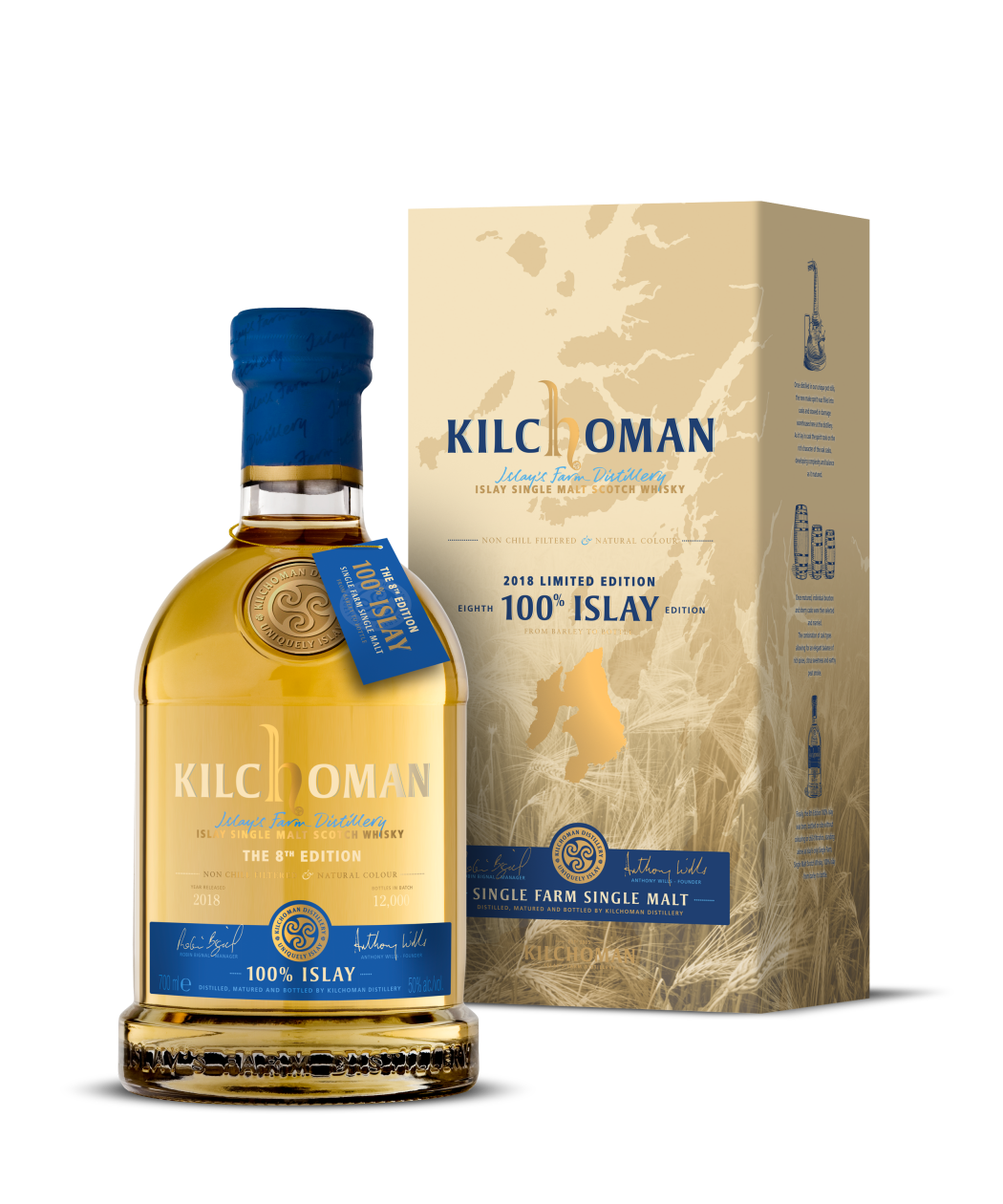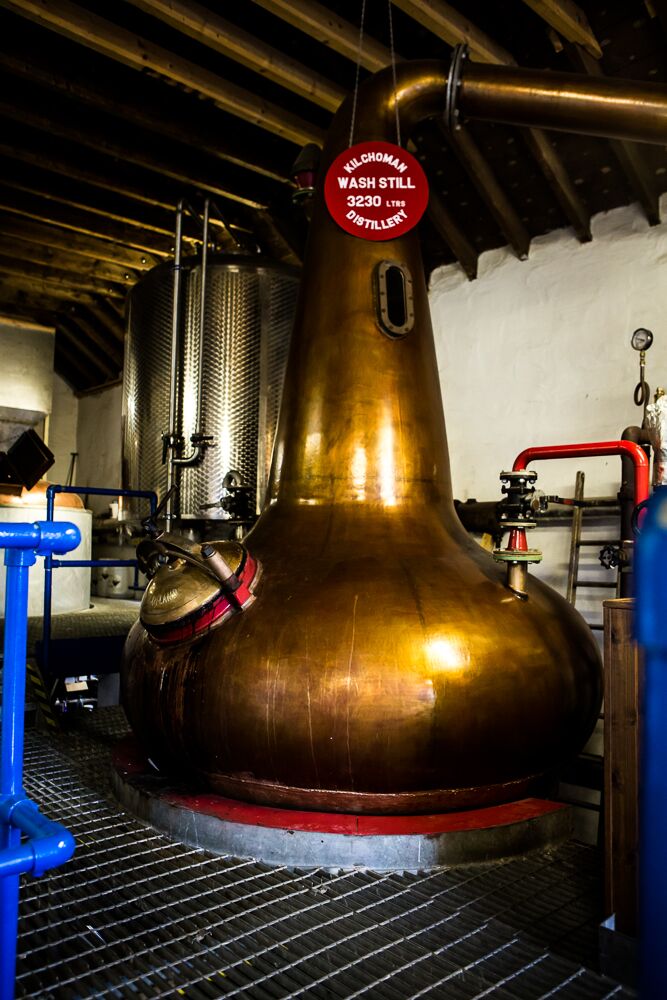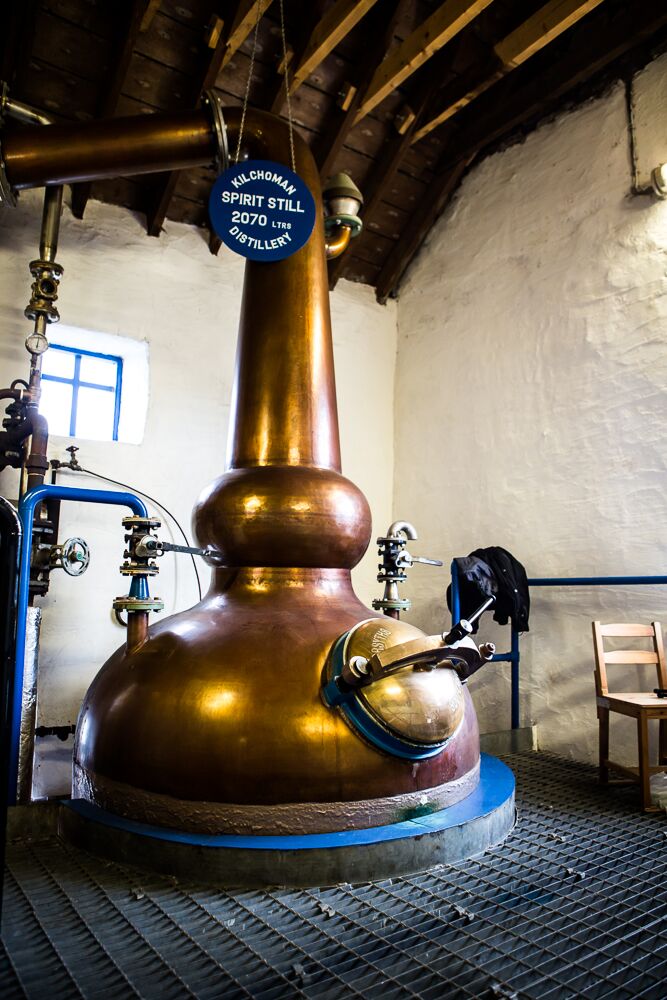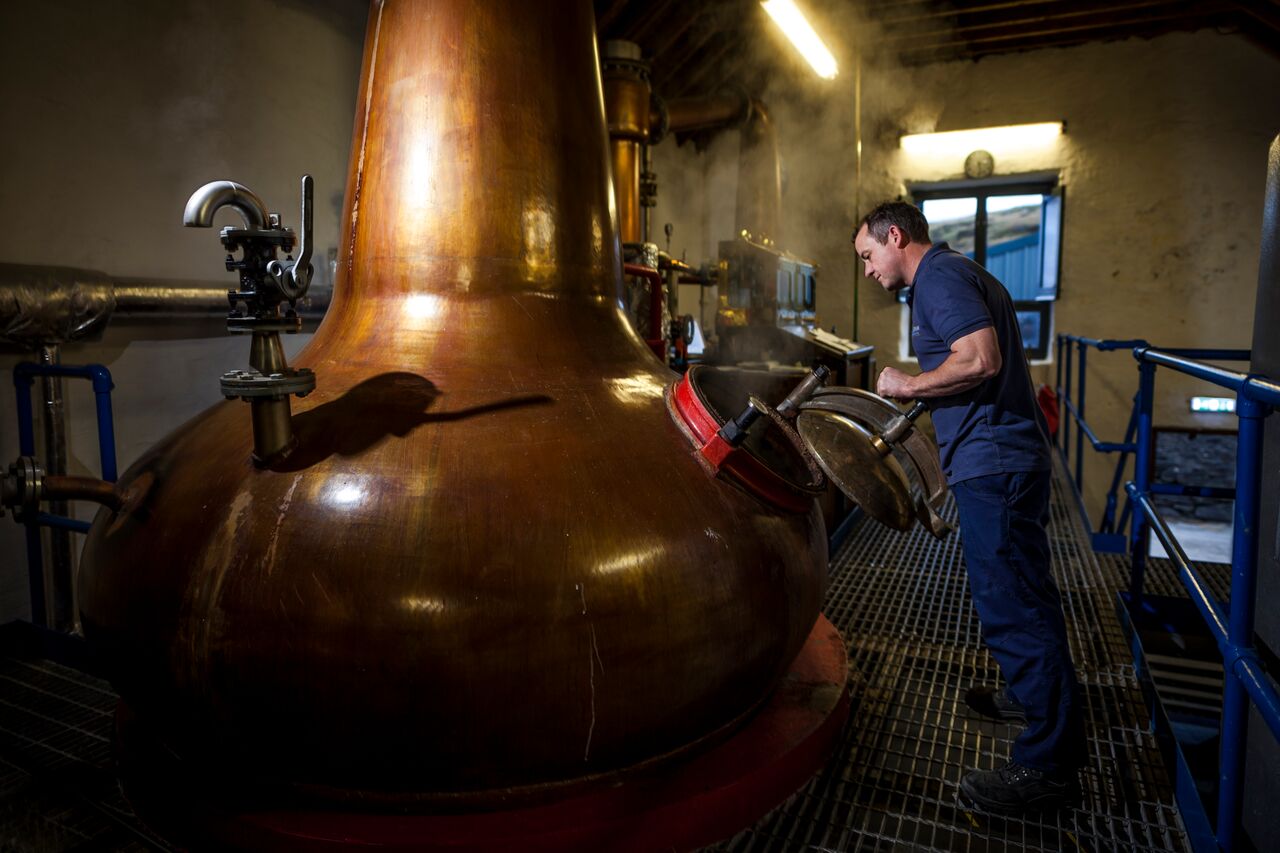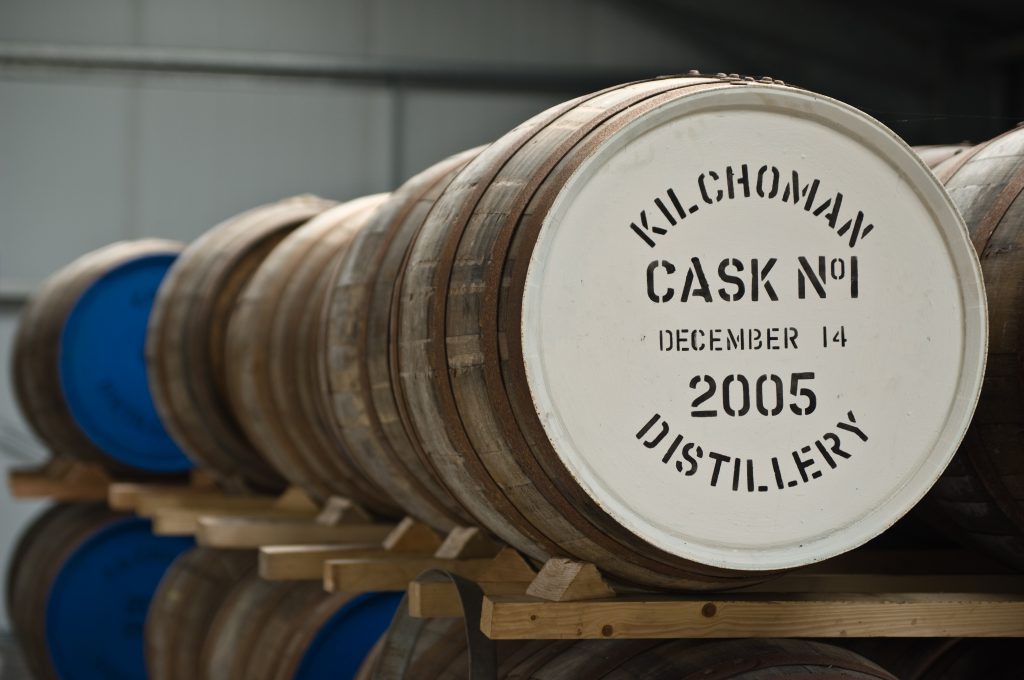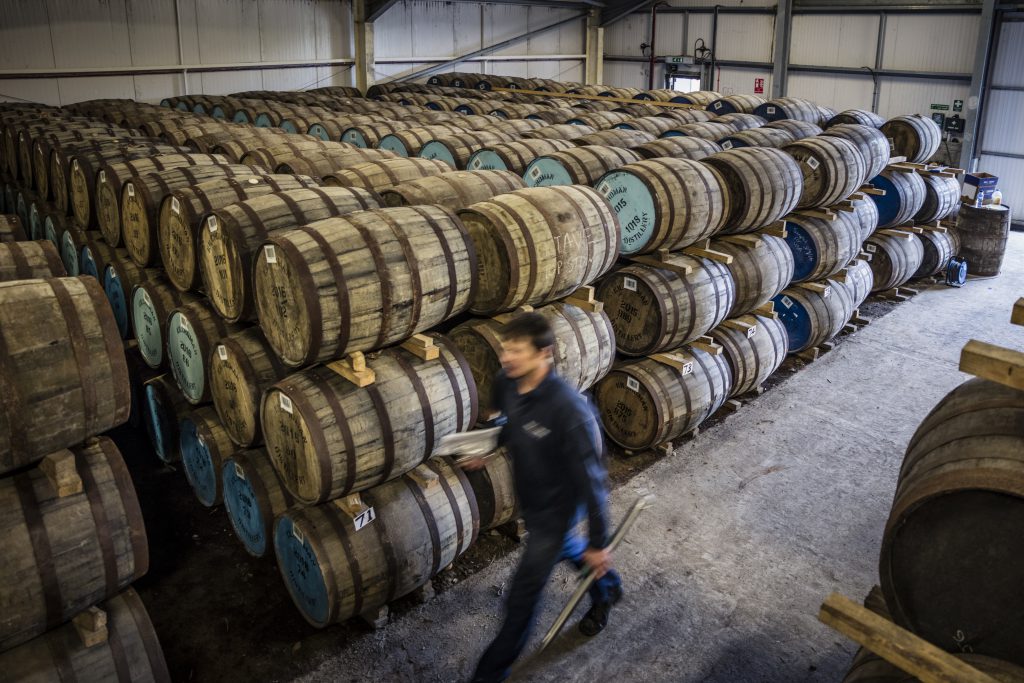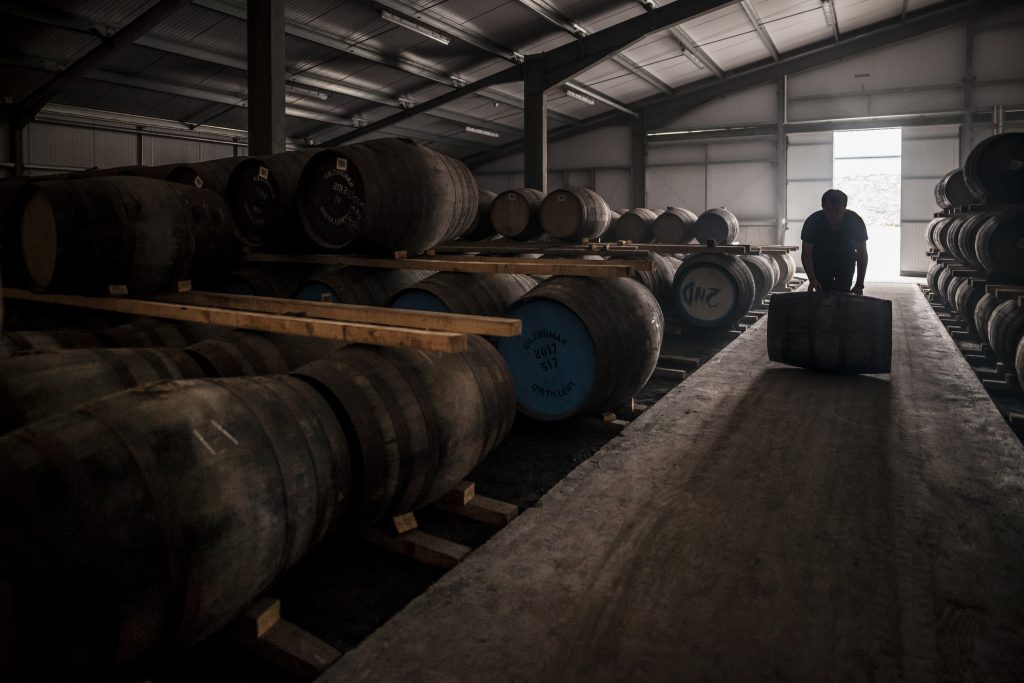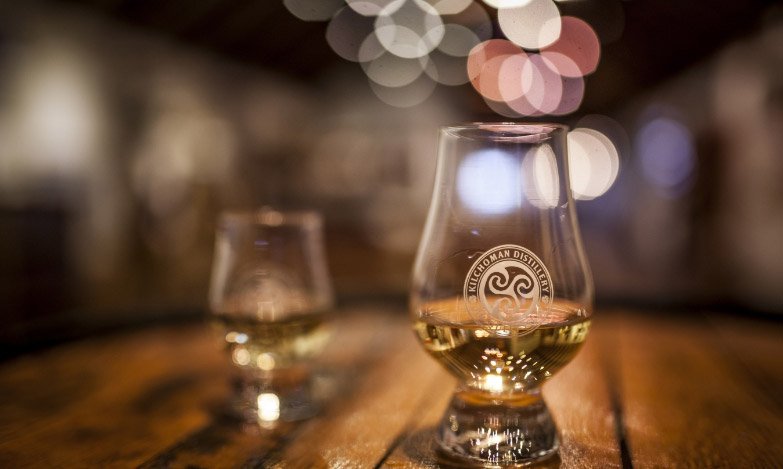Sauternes Cask Finish, a limited edition release of just 30 casks, is on its way around the world, hitting shelves any time from Monday 1st October.
The Sauternes Cask Finish follows a range of wine cask releases we’ve bottled over the previous five years. This latest offering differs in that it was initially matured in ex-bourbon barrels before being transferred into fresh Sauternes hogsheads for five months prior to bottling. This finishing period allows the caramel and vanilla influence of bourbon barrels to be accentuated by the buttery sweetness of the desert wine casks. Meanwhile the classic peat smoke and citrus character of the Kilchoman spirit brings a distinct depth and punch to the whisky, emphasised at the increased strength of 50%.
We have previously favoured full-term maturation for our wine cask releases, bottling fully matured Port, Madeira, Red Wine and Sauternes editions every other year since 2013. The Sauternes Cask Finish approach has arguably provided a more balanced character, combining both the maritime peat smoke and tropical fruit typical of Kilchoman with the softer buttery floral notes characteristic of the Sauternes casks.
As with all recent limited editions, a neck tag details the number of bottles (10,000), casks, ages and cask types used in the vatting; in this case, the Sauternes Cask Finish is a combination of thirty 2012 bourbon barrels married in Sauternes wine casks for five months before bottling.
Anthony Wills Kilchoman Founder and MD, “The full-term wine cask maturations that we’ve released in the past have been hugely successful, but we wanted to show a more measured approach this time around. The five month Sauternes finish has allowed a more subtle sweetness and buttery character to be imparted into the spirit while maintaining the fresh fruit, citrus and vanilla notes so typical in Kilchoman releases.”
The Sauternes Cask Finish is being shipped to our distributors around the world as we speak! We will also be releasing a small number of bottles on our website from Monday the 1st of October at 2pm GMT – £78.00. On Monday, click on ‘Menu’ then ‘Whisky Shop’ to get your bottle. As with all our limited editions, this is limited to one bottle per person, sorry!
The Kilchoman European Tour is back in 2018! It has been three years since we packed up the Land Rover and took it on a tour around Europe, so the time has come for Kilchoman to get on the road once again, with a few new additions…
The 2018 Tour will be our biggest and best yet; covering more miles over a longer period with bigger and better tour events than ever before. This year also welcomes the arrival of the new Kilchoman Trailer!
We have done away with the regular sit-down tastings, so come along for an evening of Machir Bay Old Fashion cocktails served from the Exhibition Trailer, pair Kilchoman with Scottish Highland cheese and Atlantic Sea Salt chocolate, and taste through a range of our single malt whisky with the team from the distillery (including the Tour Bottling of course!). We’ll be there to share a few stories as well as a few drams as we make our way around Europe.
The Route
This year’s tour will start on Islay, visiting nine countries over seven weeks, covering over 7,000 miles – Islay – Scotland – England – Belgium – Luxembourg – Netherlands – Germany – Austria – Italy – Switzerland – France – Islay. Click HERE to find out the exact dates and route we will be taking.
The Vehicle
The Kilchoman Land Rover has been re-branded with a fresh wrap and will be towing the new Exhibition Trailer.
The Bottle
A special bespoke, individually numbered, limited edition bottle will be released for the 2018 European Tour. Just 2,310 Cask Strength Machir Bay bottles will be available exclusively from the selected venues along the tour.
Continue to follow the European Tour news section for updates and we will see you soon!
The island of Islay is famous for its peated single malt whisky, beautiful scenery and remarkable history. The weather, on the other hand, can be infamous. Whilst temperatures rarely fall below freezing, wind speeds sometimes exceed 100mph and it once rained for over 90 days in a row. Both Islay and Islay Whiskies, none more so than Kilchoman, are a product of this unique environment. So let’s look at how the weather influences our whisky.
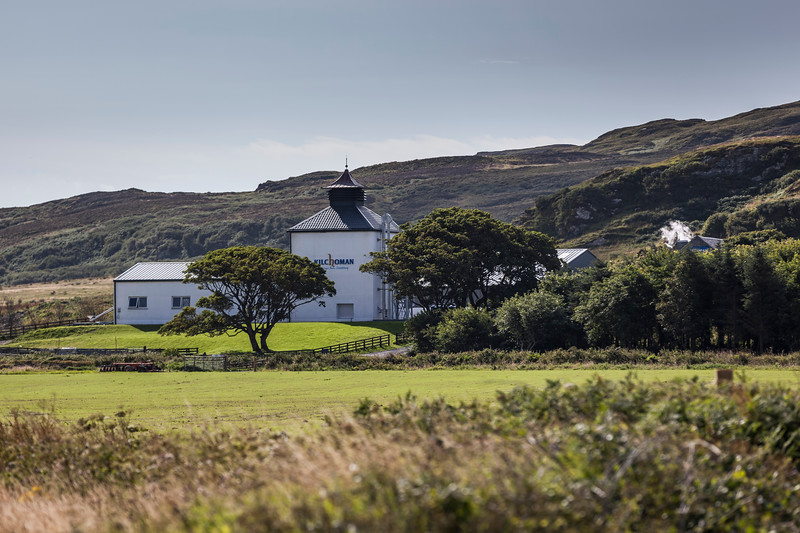
Savage winter winds
Islay’s position 15m (25km) west of mainland Scotland leaves it entirely exposed to gales that sweep in from the Atlantic Ocean. This means that Islay, like many of our neighbouring islands, has very few trees. In place of wood, generations of Ileach’s (people from Islay) have turned to peat as their main fuel source, burning it both in their homes and when drying their barley ahead of distillation. Though it doesn’t produce as much heat as wood, peat was readily available at a time when Islay rarely traded with mainland Scotland. As the island modernised, cutting peat for domestic use has become less common, however for Islay’s more traditional distilleries, Kilchoman included, peat remains crucial to creating the briny peat smoke character for which Islay whiskies are famous.
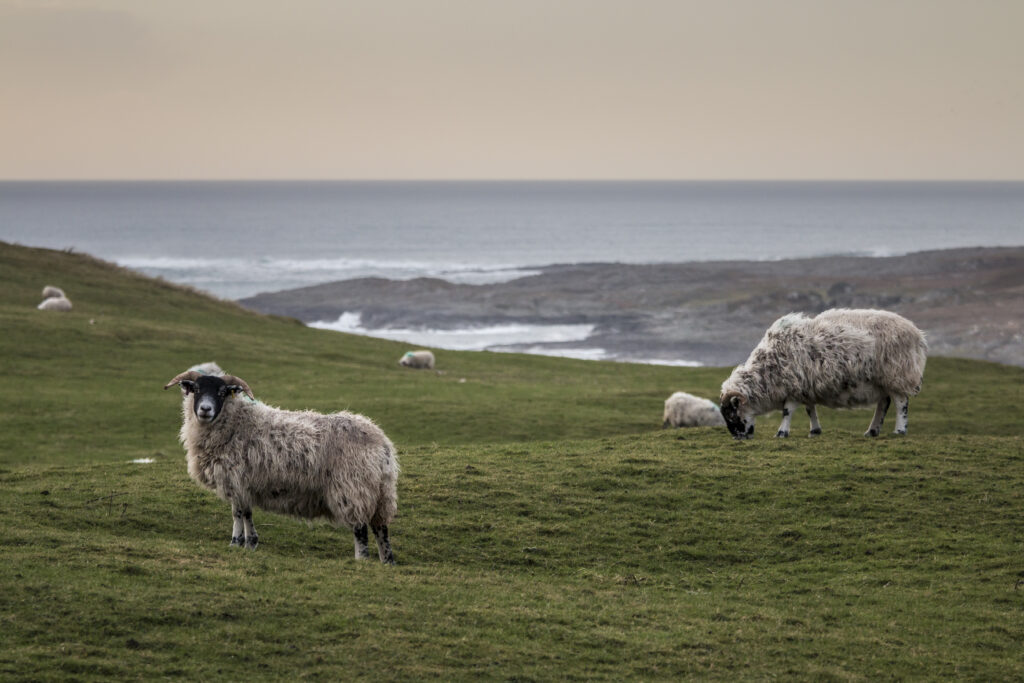
Rain, wind, barley and geese
As the old saying goes, ‘today’s rain is tomorrow’s whisky’ and with nine working distilleries and an average of 191 days of rain each year it shouldn’t come as a surprise to know that Islay has plenty of whisky!
Whilst the rain might provide us with something no distillery can do without; water, it poses an unpredictable challenge to our farmers. That said, there is little we can do to control the weather, a more direct worry is the 40 – 50,000 migrating geese which winter on Islay every year. Farmers, us included, must protect their seed from the hungry geese, waiting until they leave in mid-April before sowing our barley, 1-2 months behind mainland farmers. This has the knock-on effect of a late harvest, leaving us exposed to deteriorating early autumn weather as we wait for the barley to ripen.
All of these elements, rain, wind, barley and geese play a part in the chemical makeup of Kilchoman barley, affecting how easily it is malted and peated, the amount of spirit we can produce from each ton and of course the final character of our mature single malt whisky.
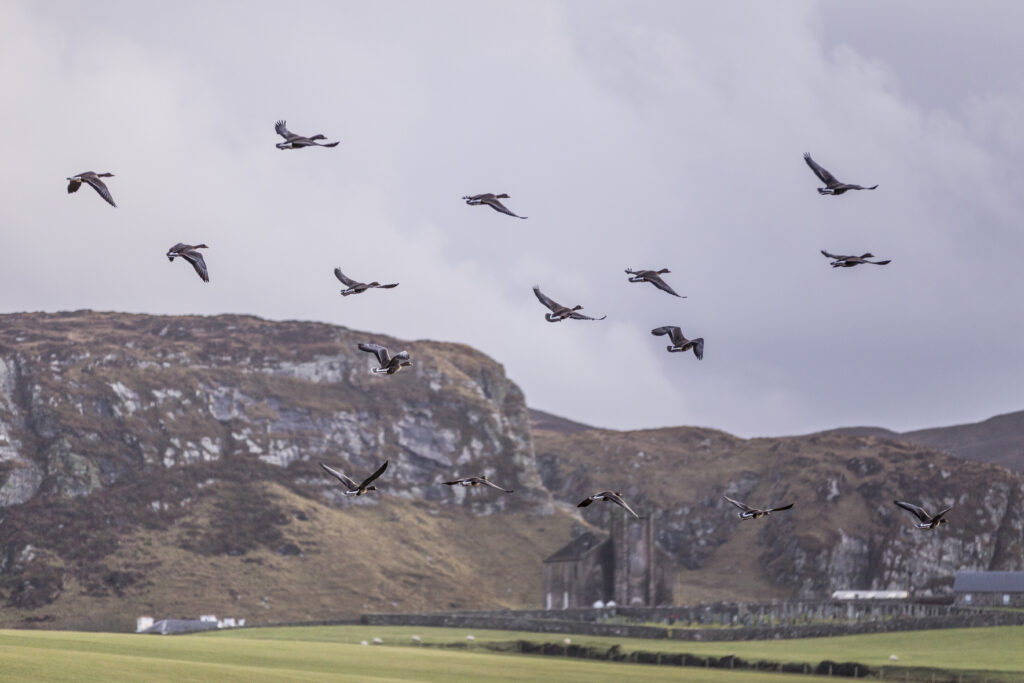
Islay’s mild temperatures
Perhaps the biggest impact on Kilchoman is Islay’s mild climate. Islay’s location on the south west coast of Scotland places it directly in the path of the Gulf Stream, an underwater river of warm ocean water flowing from the Gulf of Mexico to the western Isles, ensuring that Islay’s weather, though wet and windy, is consistently warmer than the mainland, especially during the cold winter months. From summer to winter, the average temperatures here on Islay only various 10°C on average, from 7°C (45°F) in the winter to 17°C in the summer (63°F).
This mild climate together with our traditional dunnage warehouses, create the perfect environment for steady and consistent maturation of our whisky, allowing the spirit to be gently drawn in and pushed out of the cask as the warehouse temperatures peacefully rise and fall over the course of the year. This interaction between the spirit and the cask is the basis of maturation, controlled entirely by the climate of where the whisky is aged.
Kilchoman is as much a product of Islay’s climate as any other part of the whisky-making process. From sowing the barley to maturing our whisky the island’s unique weather plays its part in shaping Kilchoman’s distinct character.
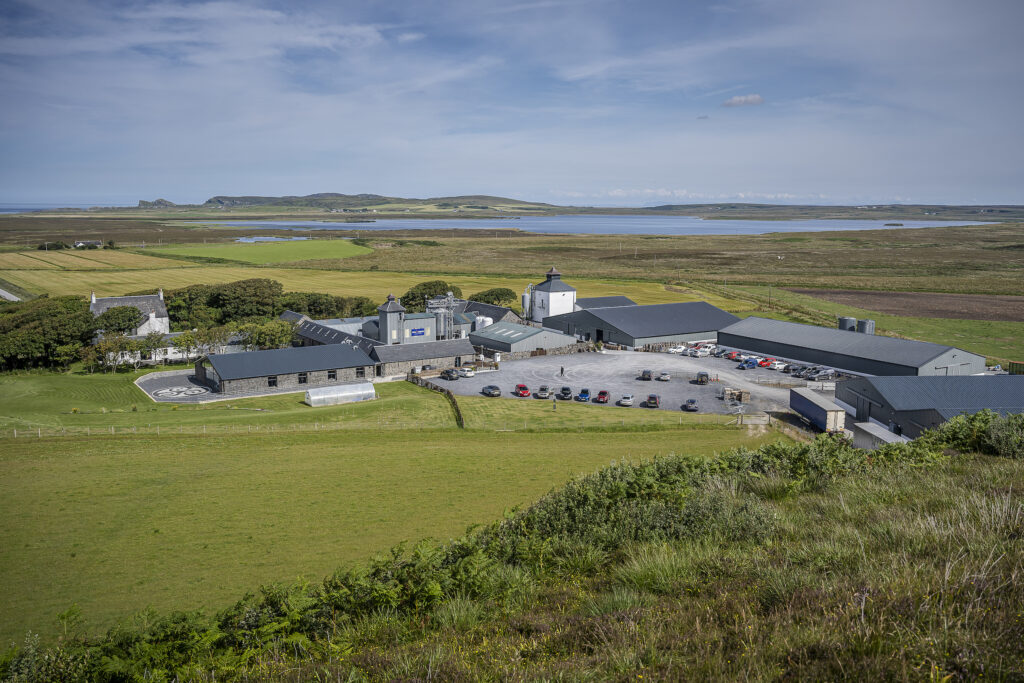
Click here to stay in the know with all the news from the distillery and info about upcoming releases by signing up to our Kilchoman Club.
Islay’s only Single Farm Single Malt
The latest instalment of our 100% Islay range is to launch on Monday the 10th of September. Released in limited runs annually, the 100% Islay range is our only expression distilled solely from barley grown and malted here at the distillery.
This, the 8th Edition, is a vatting of 23 bourbon barrels and 7 oloroso sherry butts filled between 2008 and 2012, bottled at 50% ABV. A total of 12,000 bottles have been released worldwide, hitting shelves from the 10th of September.
The 8th Edition can trace its origins to the fertile soil of the Kilchoman barley fields. It was here that we harvested Optic barley between 2007 and 2011. Once harvested the barley was hand malted, peated and distilled before being matured in a combination of bourbon and sherry casks. The combination of cask types allowing for an elegant balance of rich spices, citrus sweetness and earthy peat smoke.
Bottled on site, the 100% Islay 8th Edition is without colouring or chill-filtration, standing alone as Islay’s only Single Farm Single Malt, 100% Islay – from barley to bottle.
Though the name might suggest a heavier peating level than our standard 50ppm offerings; Machir Bay, Sanaig and others, the 100% Islay range is in fact peated to a lower level of roughly 20ppm. Although this is not an exact measurement as the small batches and old-style techniques make it almost impossible to peat each batch to exactly the same level.
The key difference between this and previous batches of the 100% Islay is the addition of sherry cask maturation. The seven oloroso sherry casks included in the vatting give the whisky added depth and richness compared to the fresh fruits and vanilla of previous editions.
Anthony Wills Kilchoman Founder and MD, “The 100% Islay range was the reason we built Kilchoman, we wanted to take whisky-making back to the grass root traditions of the industry, where we had the ability to influence each stage of the process to maximise the character of our whisky. Part of that is barley; how it’s grown, malted and peated, part of that is slow steady hand distillation and part of it is casks; filling casks that pair well with your spirit and selecting the right balance of casks when they reach maturity. Great whiskies are not a result of a single part of the process, they’re the outcome of time and passion invested at every stage of the process”
The 100% Islay 8th Edition is on its way to retailers and bars around Europe. It might take a little longer to reach countries further afield, but don’t worry, it’s on the way and will get there! We will also be releasing a small number of bottles on our website from Monday the 10th of September at 2pm GMT – £73.50. On Monday, click on ‘Menu’ then ‘Whisky Shop’ to get your bottle. Due to the number of bottles, this is limited to one bottle per person, sorry!
At Kilchoman distillery we have two pot stills, our wash still and our spirit still. From these stills we are able to create something very unique and powerful; our new make spirit. Kilchoman new make spirit is light and floral, like magic in a glass. The question is however, how are we able to create this magic?
An overview of distillation
After our barley is grown, harvested, malted, peated, dried, mashed and fermented, it’s finally ready for the process of distillation. The first stage is to add the wash from the previous step into a large pot still called the wash still. These are normally handmade from copper and heated from below, vaporising the liquid into a fine alcoholic mist – a product reminiscent of the foggy Islay clifftops looming outside. This then rises up the neck of the still where it condenses into a liquid called ‘low wines’, at around 25% alcohol by volume. Enough to get you stumbling, sure, but it’s not a something we would advise on drinking! At Kilchoman, 3000 liters of wash is pumped into the wash still, from this only 1000 liters will become low wines, the rest is pot ale (which we use as fertiliser on our barley fields.)
Since the low wines themselves are frankly undrinkable, the still men move it into a second, smaller still called the spirit still. When heated, the alcohol rises much like an actual spirit, and separates out into three phases of which only the middle phase is deemed good enough to be collected for maturation. This forms the ‘heart’ of the whisky and is taken to our filling store to be filled into casks for maturation in one of our four dunnage warehouses. Meanwhile, the early (foreshots) and late phases (feints) are mixed into the next batch of low wines ready for another round of distillation. From the 3000 liters of wash that we start with at kilchoman, only 300 liters of new make spirt is created.
The wash still
The beauty of the pot still is that it helps to keep the flavor of the mash, unlike the reflux stills used for vodka or rum. The shape of the wash still is fairly generic, from distillery to distillery the wash still will look the same but will most likely differ in size. At this stage, the wash still doesn’t necessarily have an influence on the character of our end spirit.
The spirit still
The spirit still is the smaller of the two, and the most important when it comes to creating the fundamental flavors that define a whisky. The neck shape is a key component, as is the overall size. Kilchoman Distillery use a 2070 liter still with a relatively tall, narrow neck. While this might sound large it’s remarkably small compared to some distilleries which are home to pot stills over ten times the size. At Kilchoman we have a tall narrow neck on our spirit still and we distill slowly thus giving us our unique light floral spirit. The reflux bulb (or boil bulb) on our still aids the purification of the spirit, this is where vapor can circulate and interact with the copper for longer, removing more unwanted compounds and resulting in a more defined flavor. The spirit must work harder to climb up the neck, the more difficult the spirit finds it to rise up the still, the lighter our spirit will be, this is what gives us our unique clean, light and fruity spirit. Therefore, the larger the reflux bulb the lighter and fresher your spirit will be. There is no right or wrong, with each distillery looking to create their own unique whisky profiles, steeped in the traditions of their region. With different traditions come different pot stills.
Why copper?
Copper is a very important factor when it comes to the pot stills. The interaction between the copper and the liquid will purify the spirit, it will purify the low wines from the wash still and the spirit from the spirit sill. The copper component has a heavy influence in producing the end product of Kilchoman new make spirit. In fact, some pot stills are shaped to maximise copper contact at key points, with the belief that the flavor can be tweaked at just the right level. Copper is also a fine heat conductor, helping to distribute heat evenly.
‘Our copper stills produce our unique signature Kilchoman, light floral spirit’. (Anthony Wills, 2018 – founder of Kilchoman)
The Cut
Not all the spirit produced in the spirit still is worthy of the cask. As mentioned, three phases of spirit are produced, with the foreshots deemed to contain undesirable compounds. It’s the vital role of the stillman to determine the ‘cut’ of a whisky, only sampling that which contains the perfect balance. This normally takes years of training to truly master and varies from distillery to distillery depending on what a whisky means to them. Kilchoman spirit runs through a spirit safe and is cut early, from 75% abv to 65.5% abv with an average of 70%. This gives our whisky its unique and famous freshness. Other whiskies are cut later or over a wider range, giving them completely different properties – yet another reason that scotch whisky is so wonderfully varied.
The Stillman
The art of perfecting the cut requires intimate knowledge of the ingredients involved, from the freshly malted barley to the glistening spring water. Cut too early or too late and the impurities of the feints can throw off the balance of whisky. So, the stillman waits, and watches. The pot stills may be surrounded by science but this aspect of the distilling process is a very human art form. It’s why expertise and tradition go a long way to creating the best whiskies. Yes, it’s a long and taxing process, but given the magical results, its worth is known in the end.
‘Tradition makes the whisky, people make the spirit.’ (Islay Heads, 2018 – Distillery manager)
After the success of our 2014 European Tour and 2015 being our 10th Anniversary year we have decided to hit the road once again, this September and October we will be taking the Kilchoman Land Rover through Belgium and The Netherlands before heading south to France, over to Germany, up through Denmark and Sweden before making our way back to Islay.
Further details will be announced in the next few weeks so stay tuned, we will also be posting details on our dedicated Facebook Page and on the distillery Twitter.
Dates are as follows Belgium 1-5th of September, Netherlands 20-24th Sept, France 25-28th Sept, Germany 30th Sept – 4th Oct, Denmark 6-8th Oct, Sweden 9-11th Oct.
Peat plays an essential role in the art of whisky making here on Islay. Generations of Islay distillers have relied on peat to dry their barley ahead of distillation. This process, born of necessity, has set Islay whiskies apart and created arguably the most distinctive and iconic style of Scotch whisky available. However more we are often asked ‘What is peat?’ ‘Where do you get it from?’ ‘What’s so special about Islay Peat?’ Here we delve into the science, history and traditions of peat cutting on Islay and ask why is it so important to creating a true Islay whisky.
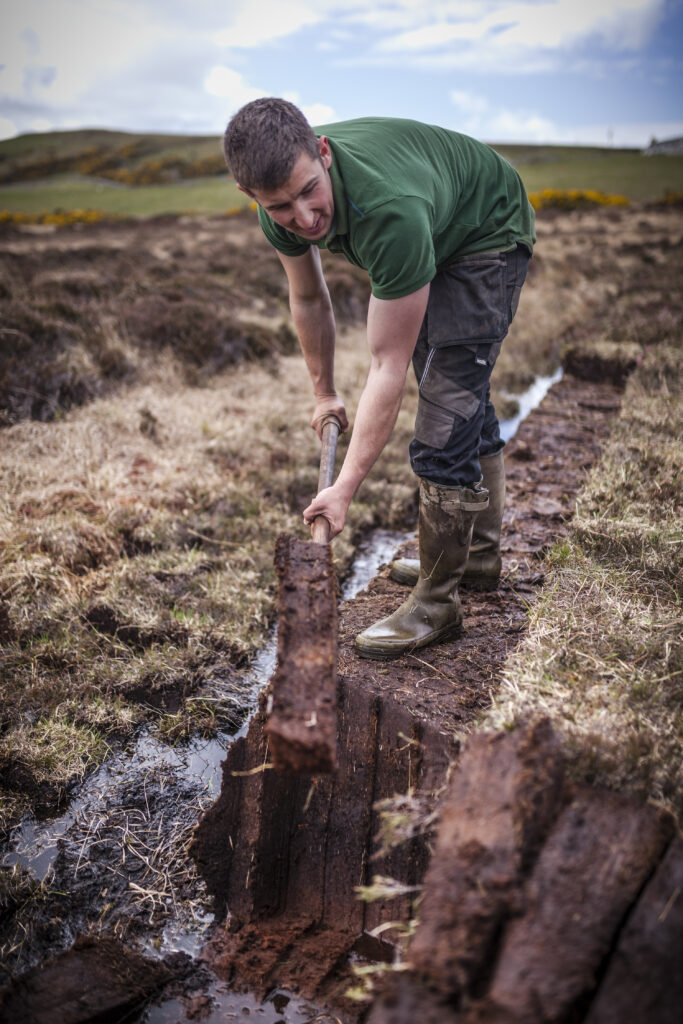
What is Peat?
Peat is vegetation within the ground. It is an accumulation of partially decayed vegetation or organic matter. This is unique to natural areas such as peatlands, bogs and moors. The peatland ecosystem is the most efficient carbon sink on the planet as peatland plants capture C02 naturally which is released from the peat, maintaining an equal balance of the opposing forces. Peat remains essential to many islands who use it as fertilising, retaining moisture and stopping the rate of weed growth within gardens and flower beds.
For centuries however, the primary use of peat has been as a source of heat. Islay and much of the western Isles regularly experience winds in excess of 80mph, as a result trees are few and far between meaning Islanders turned to peat as a fuel. Though it doesn’t burn as hot as wood or coal, peat was readily available at a time when Islay rarely traded with mainland Scotland. As the island modernised, cutting peat for domestic use has become less common, however for some of Islay’s more traditional distilleries peat remains crucial to creating their distinct smoky character.
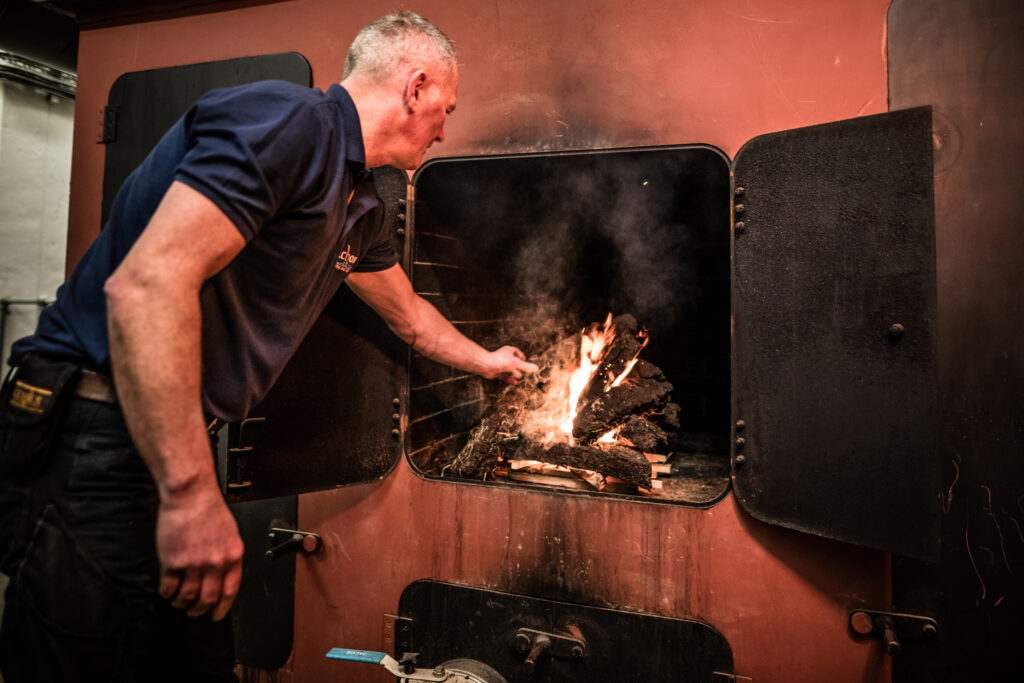
Where does peat come from?
Peat comes from a peat bank; however, peat banks are not easy to come by, there are certain features within the environment that must be considered when looking for a peat bank.
To be a peat bank it must be a minimum depth of 1.5 to 2 metres. The surrounding area should be generally flat, avoiding stones and have plenty of heather growing on top and around the bank. When planning to cut peat, the peat bank should be accessible for not only people but also vehicles so the peat, when ready, is easy to move.
On Islay, the peat season would run from mid-April through to July, any day the locals of Islay were able to cut peat they would. The local peat cutters where expected to cut 18-20 ‘Perches’ a day for the Islay Distillery’s. A ‘Perch’ is a piece of peat 5.5 metres by 5.5 metres. In the 1960’s locals were paid more to cut peat than work within the distillery’s themselves, however it was very hard manual labour.
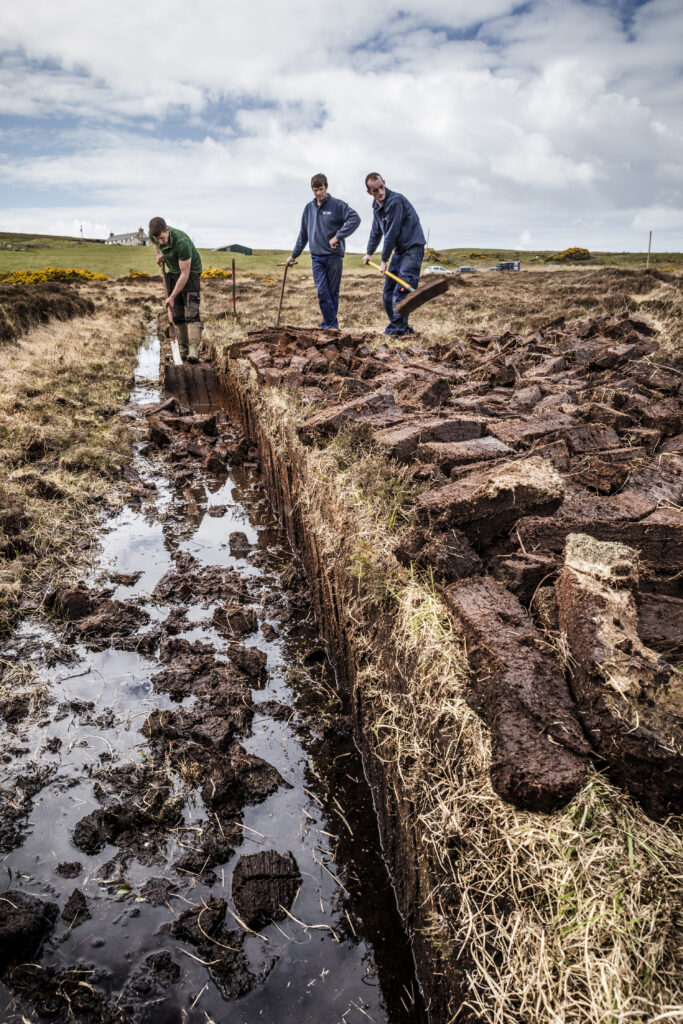
Once the Peat was cut they would carry each perch 5 metres from the end of the bank and lay it down to start to dry. The peat could be left anywhere from 7 days to 3 months depending on the weather. Once the peat had formed a crust they were then moved and placed into something called a ‘Window’ or a ‘Rook’
A window would be made up from the peat that was closer to the top of the bank, this peat was not as delicate as the peat further down within the bank and therefore would hold together better. This peat was placed on top of each other and thus a window was made.
A rook was slightly different, this was the peat that was older and further down within the bank, it was much denser and therefore was easier to break. The peat that made up the rook could be tens of thousands of years old.
The Windows and Rooks would then be left from 3 weeks to 3 months, again very dependent on the Island Weather. The locals would check the peat by breaking a piece off to see if it had dried throughout.
Once the peat was dry, it would be moved off the moss. There were two ways the peat could be taken away, the locals would use old yeast bags from the distilleries or old feed bags from the farm for the peat to be put in. Alternatively, a trailer would be brought in and the peat would be taken away loose. If the peat was taken away loose in a trailer it would then have to be stacked up, this was referred to as ‘grieving the stack’. This was a way in which the peat would be stacked but would shed any rain that fell.
Why does Kilchoman Distillery use Islay Peat?
Kilchoman, though the newest distillery on Islay, is arguably the most traditional in its scale and approach. Growing our own barley is part of this philosophy however equally important is using Islay peat to smoke our barley.
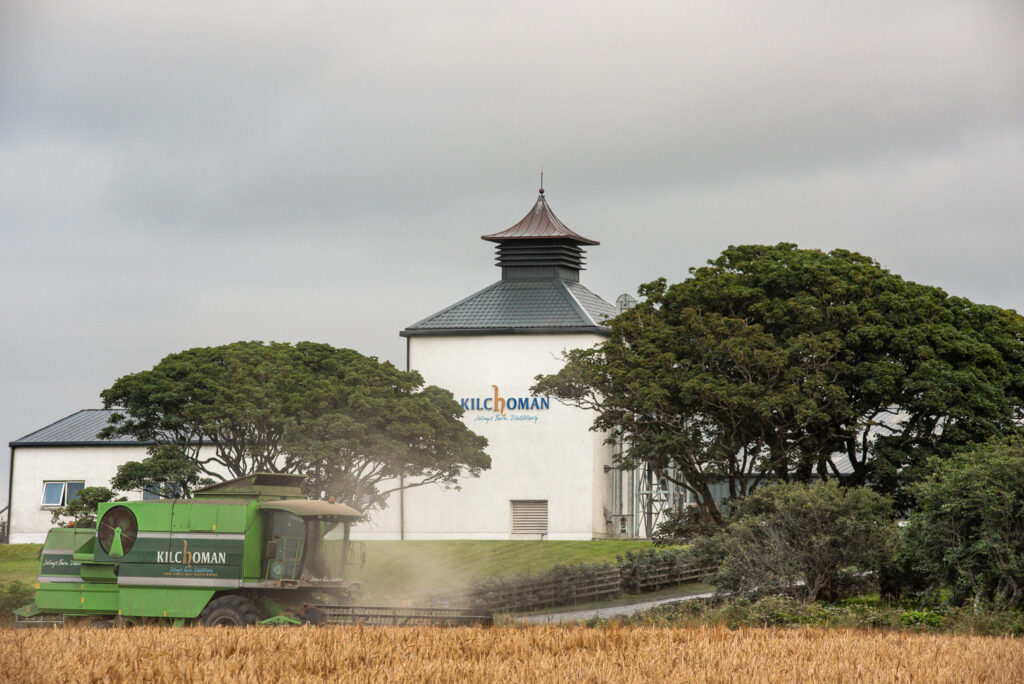
We have two sources of peated barley; we grow approximately 200 tonnes of barley here on the farm, which we malt and peat ourselves using peat cut from Cnoc Dubh banks near the distillery. This accounts for part of our needs, the balance of barley comes from the Port Ellen Maltings, a Diageo run malt house on the south side of the island supplying Kilchoman, Ardbeg, Coal Ila and Lagavulin.
Crucially, both here at Kilchoman and at the Port Ellen maltings Islay peat is burned beneath the malting barley to infuse it with unique Islay peat smoke character which once malted, distilled and bottled sets Islay’s whiskies apart.
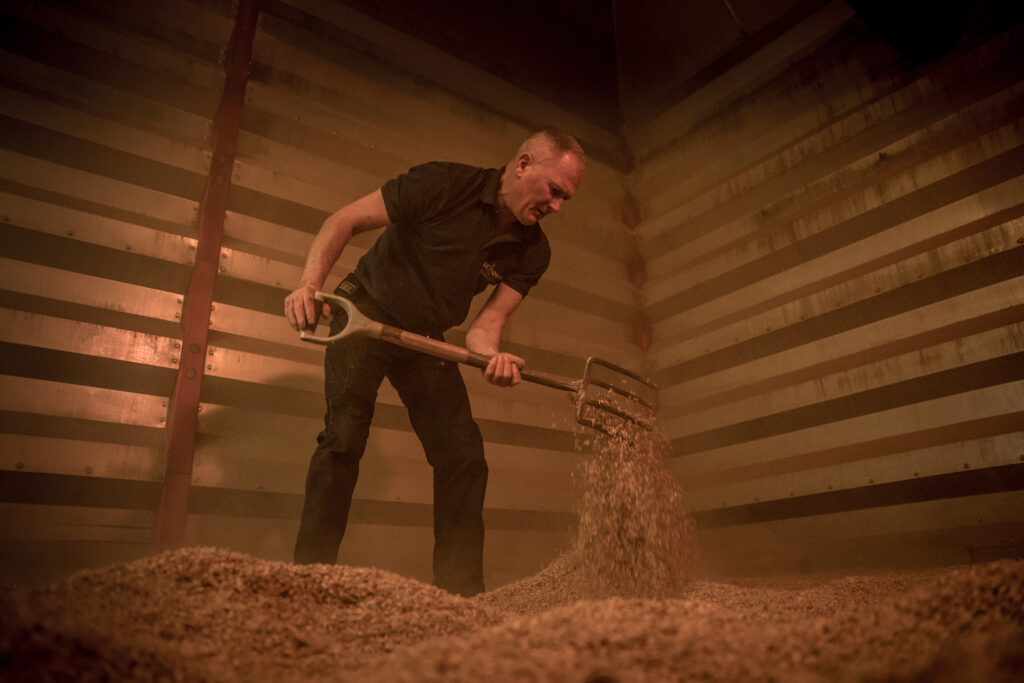
Islay is more exposed to the elements than mainland Scotland. The climate, ocean, wind and rain all have an effect on the island, therefore the peat and the whisky made from Islay peated barley are unlike any other; more salty, maritime and medicinal than mainland peated whiskies.
Discover more about our range of peated Single Malts HERE

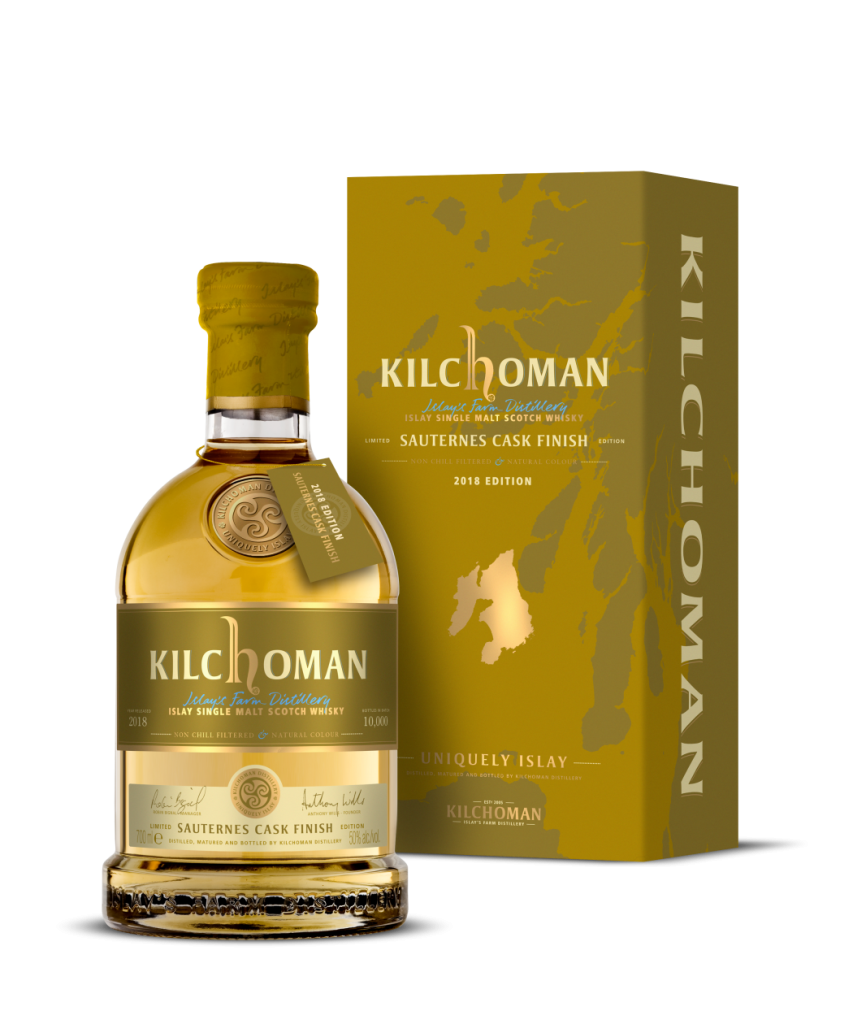
 From left to right, Concerto and Octavia
From left to right, Concerto and Octavia